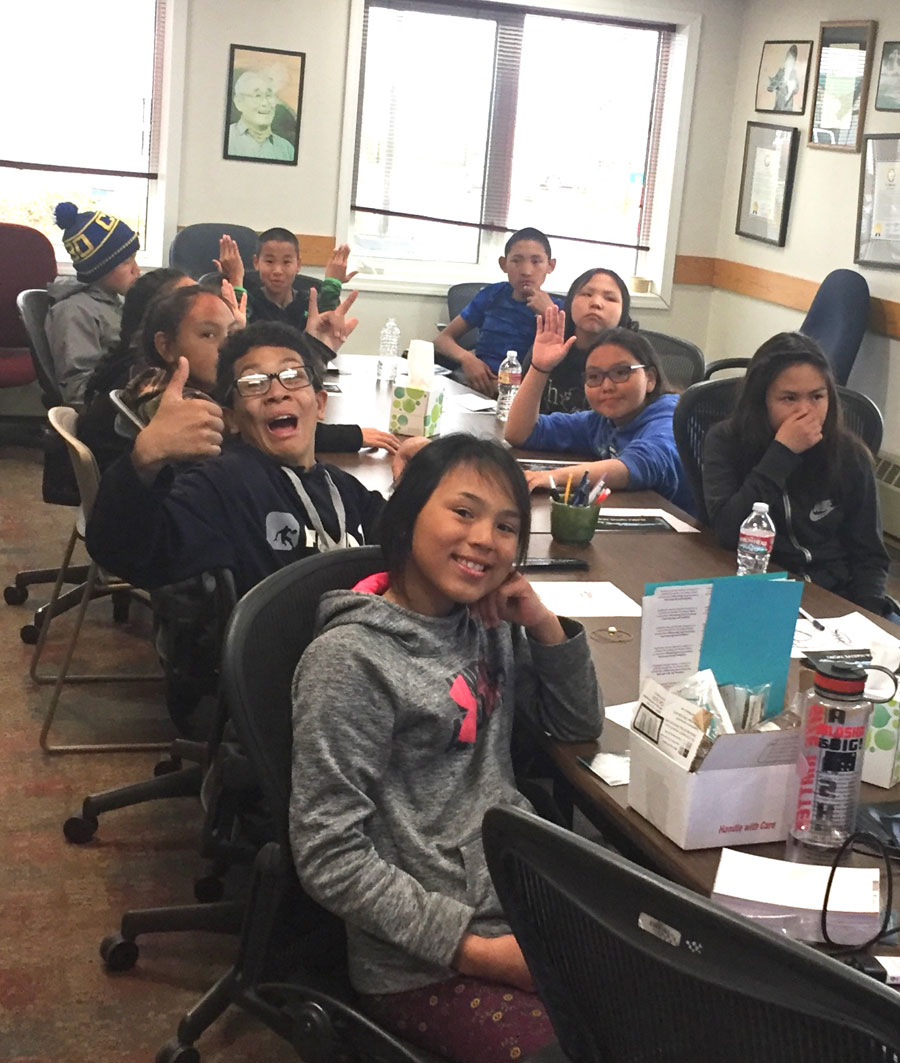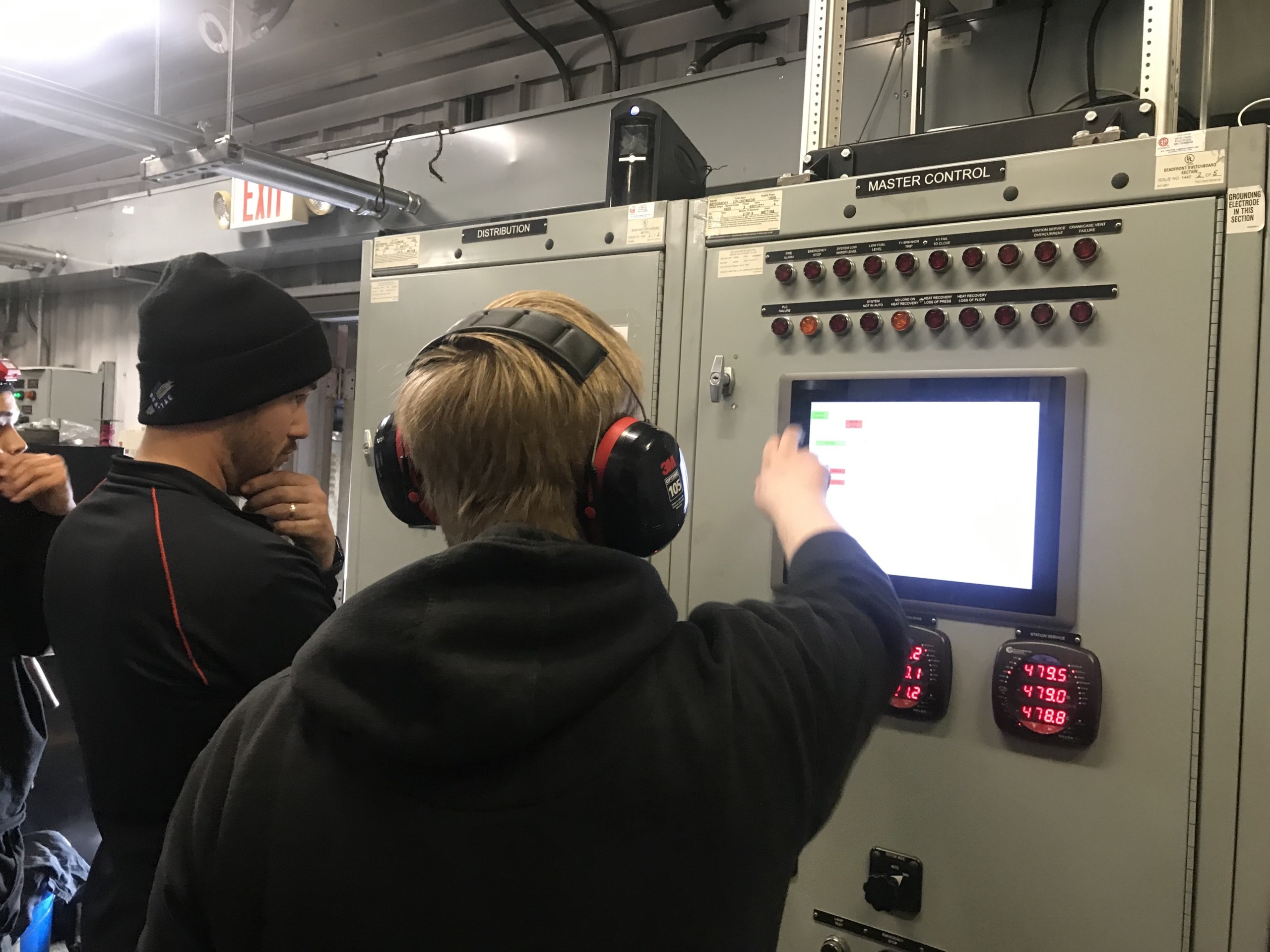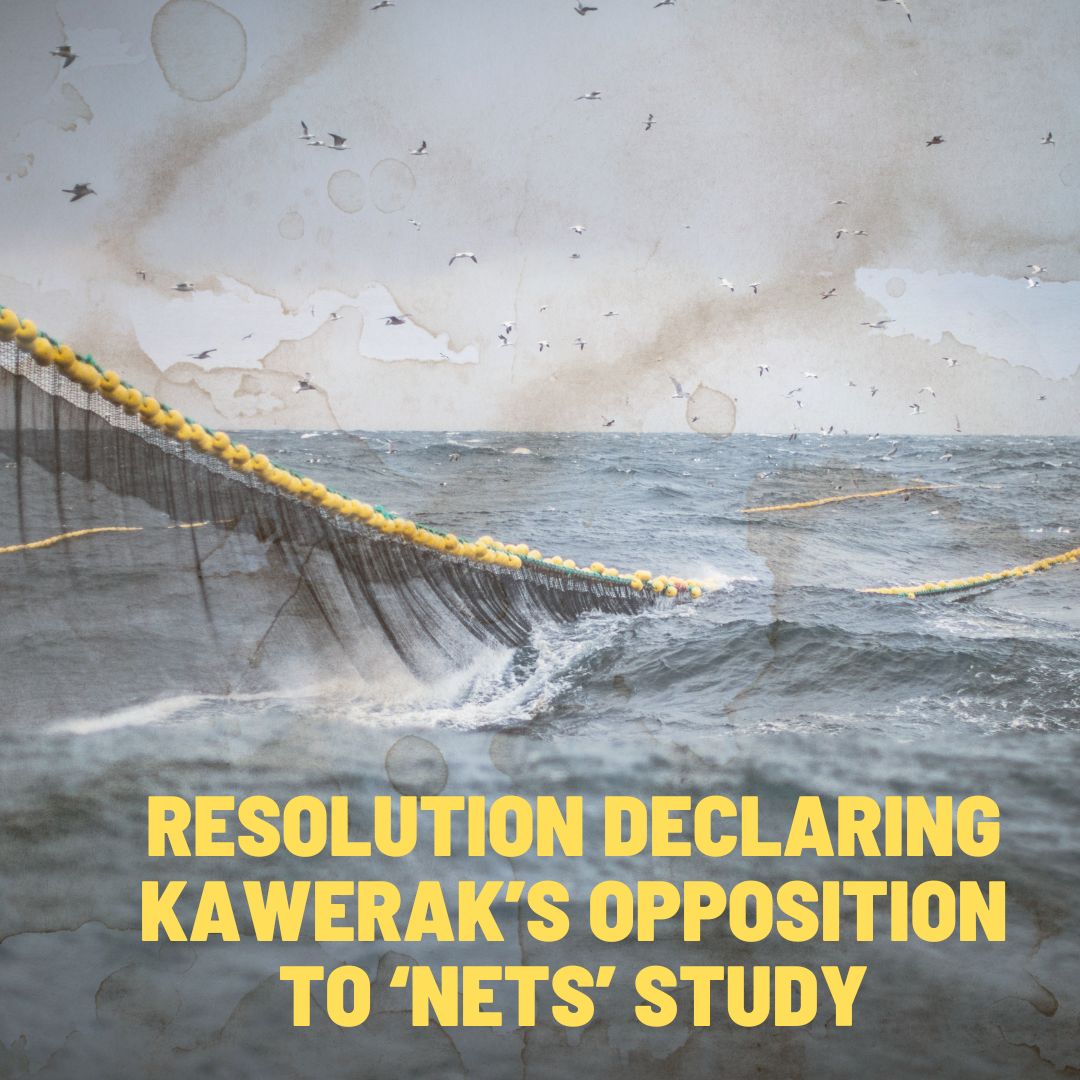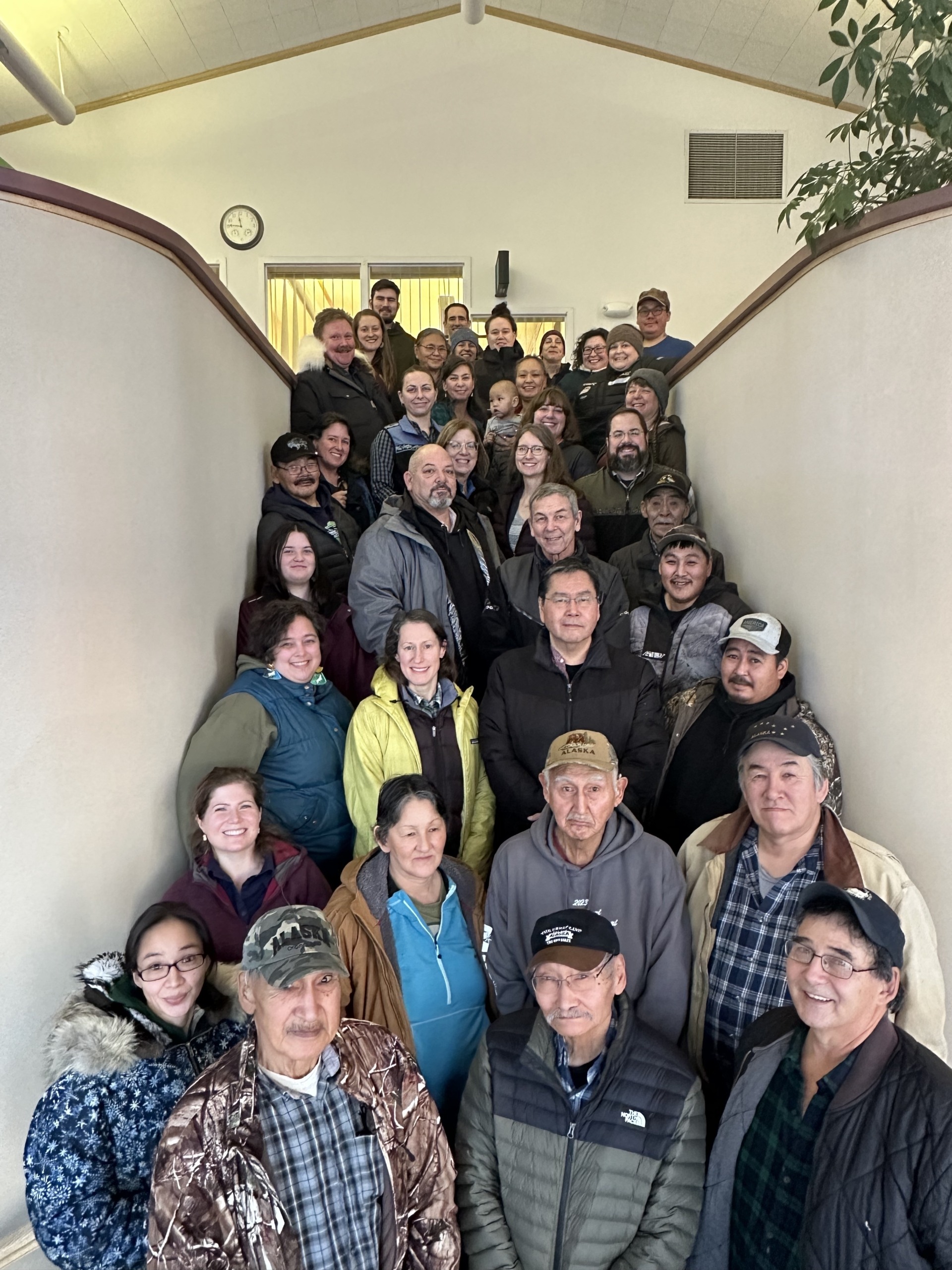“How many of you know an artist in your community that sells ivory carvings?” Twenty one hands were raised in response to this question posed by Outreach Director Danielle Slingsby. The group of NACTEC students made it immediately clear that walrus ivory is very important to our communities in the Bering Strait. “How many of you know about that ban on ivory in the lower 48?” Only a few hands were raised.
The following 20 minutes were taken as an opportunity to not only educate the students about the ban on ivory, but also to invite them to become a part of the advocacy effort. Students examined brochures on Alaska Native Ivory, asked questions about the ban, and learned about the rights Alaska Natives have under the Marine Mammal Protection Act to harvest and utilize walrus for food security and economic security. Then they got to handle ivory.
Each student was given twine, one ivory bead and two decorative beads to form an ivory advocacy bracelet. The bracelets they made will be sold by Kawerak for $20 to raise money to contribute to ivory advocacy efforts, allow people a chance to support the use of ivory in art, as well as continue the education around ivory. The tag for each bracelet (as pictured above) shows how they can support the cause by wearing the bracelet as well as gives an advocacy statement “Traditional use and harvest of walrus is a cultural foundation for Alaska Native communities influencing local economy, food security and tradition.”
Be on the lookout for these bracelets at the Kawerak Regional Conference 2018 in Nome Alaska November 6-8 at the Nome Recreation Center. To register for the conference go to www.kawerak.org/krc. To learn more about walrus ivory you can download the Alaska Native Ivory Brochure. To learn more about the Marine Mammal Protection act and walrus in the Bering Strait Region visit the Eskimo Walrus Commission website.







